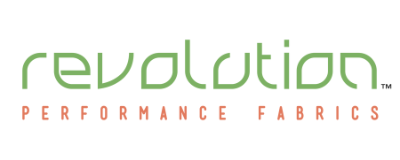
Where It Begins

Fabric begins with yarn. There are all kinds of yarns; fat yarns, skinny yarns, flat yarns, fuzzy yarns, shiny yarns, dull yarns, boucle yarns and chenille yarns... I think you get the point there are MANY types of yarns! Different yarns are meant for different applications, which is why your shirt fabric looks different from your sofa fabric. There are many different choices of yarn fibers to use as well, such as natural and man made.
We made a choice to use polypropylene for Revolution Performance Fabrics because of it’s phenomenal attributes. Polypropylene is an upcycled fiber made from the byproducts of processing natural gas. It is counterintuitive to think that a man made fiber can be more environmentally friendly than a natural fiber, but it is! A man made fiber, such as polypropylene, uses less energy and water in the manufacturing process. Polypropylene also ranks higher on the Higg Index than any natural fiber such as cotton or bamboo. The other huge environmental benefit of using polypropylene fibers is that we can make the yarn ourselves or source it within 200 miles of our mill in Kings Mountain, NC. To learn more about polypropylene and our sustainable manufacturing initiatives, click here.

Polypropylene is also a solution-dyed fiber, meaning that the color is added to the solution before it is extruded into fiber. The color cannot be taken out and it does not vary from batch to batch. Since the color cannot be taken out and it's inherent to the yarn, the fabric is very easy to clean. To see how easy Revolution is to clean, check out some of our cleaning videos here.
We have a large variety of polypropylene yarns in our tool box to create a variety of fabrics. I don’t mean to sound like Bubba Gump from Forest Gump describing all the different types of shrimp, but we really do have a lot of yarns to choose from! We can make fine tight fabric, soft fuzzy fabric, textured jacquard fabric, flat jacquard fabric... again, I think you got the point!
We make a wide variety of fabrics with the many yarns available to us and then we get into design and color, but that is a whole other blog in itself!
To learn more about our yarns and the role they play in the fabric design process, watch episode 1 & 2 of "Design with Kathy" below.

Leave a comment